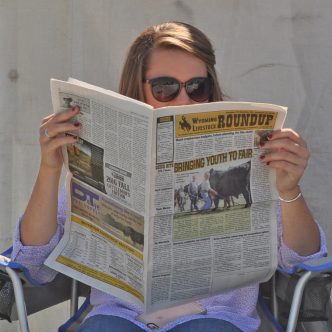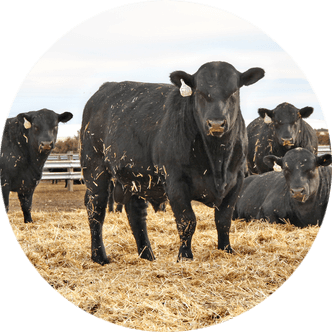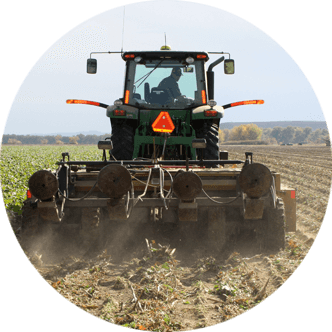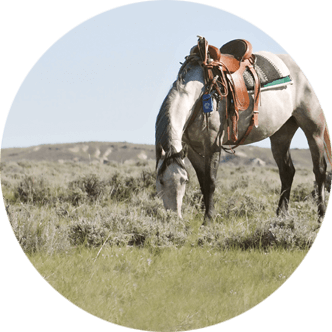High Uinta sheep grazing approved by U.S. Forest Service
The U.S. Forest Service (USFS) has issued a draft record of decision (ROD) to allow continued domestic sheep grazing in 10 national forest allotments in Utah’s High Uinta Wilderness.
The allotments are held by two southwestern Wyoming domestic sheep producers, Shaun Sims and Vance Broadbent and their families, and they provide for grazing for about 10,300 ewe/lamb pairs and 3,000 dry ewes from early to mid-July into September each year.
The decision proposes to authorize grazing on five allotments on the Uinta-Wasatch-Cache National Forest and five allotments on the Ashley National Forest, located on the north and south slopes of the Uinta Mountains, about 40 miles southeast of Evanston.
The authorization also allows continued use of 50 miles of sheep driveway to access the allotments.
Background information
The draft decision is the latest step in a process for reauthorization of these grazing permits which has taken more than a decade. It has involved numerous environmental impact statements (EIS) and was undertaken to comply with a 2013 lawsuit settlement agreement between the USFS and Western Watersheds Project (WWP).
While WWP and its allies submitted numerous comment letters to USFS, these groups claim any grazing of domestic sheep in the High Uintas will eliminate Bighorn sheep and should be reason enough to close the allotments to domestic sheep.
Their animus toward domestic sheep producers was evident in their official comment letters to USFS.
For example, in one letter they wrote, “Is the ‘shoot, shovel and shut up’ management philosophy being practiced by sheepherders and permittees in these allotments? If not, how does USFS know this? It must be assumed any carnivore seen will be shot by a herder or permittee with the excuse they were ‘harassing’ the sheep. This is a license to kill on sight and it is not ever discussed. But, with the presence of sheep and herders in every watershed, it may explain the absence or near absence of lynx, wolves, bears and wolverines in the Uinta Wilderness.”
In a separate letter, WWP berated USFS for its “misguided prioritization of welfare ranchers” and its “rush to satisfy the two permittees” while claiming domestic sheep use “renders Bighorn sheep habitat toxic.”
While the environmental documents discussed a wide range of issues, USFS noted it considered two key issues which arose during the public outreach process in making its decision – the possibility of pathogen transmission to Bighorn sheep and the social and economic future of families and communities who have been relying on domestic sheep grazing in the area for more than 100 years.
USFS noted the sheep grazing enterprises on these allotments provide for the retention of 38 employees and an estimated annual $2.6 million of economic impact to the community.
Bighorn sheep were considered extirpated from the Uinta Mountains by the mid-1970s, but were subject to reintroduction programs starting in 1983, in a cooperative effort between state and federal agencies and livestock permittees.
As the Bighorn population grew and USFS closed three domestic sheep allotments in the region in order to protect Bighorn sheep from the possibility of the transfer of pathogens, concerns were expressed by permittees, resulting in a meeting and a 1998 letter from USFS to one of the sheep producers providing assurances “no permits would be cancelled to accommodate the reintroduction and no permits would be in jeopardy of cancellation in the future.”
But USFS soon had a change in policy, placing Bighorn sheep on its list of “sensitive species” warranting additional protections, and the agency suspended its support for transplanting Bighorns until action plans were developed to address the risk of wild sheep coming into contact with domestic sheep.
The USFS’s use of the Congressionally-authorized categorical exclusion process to reauthorize grazing on these allotments was included in a lawsuit filed in 2010, and the agency settled the case with the agreement to initiate a detailed environmental review of the action, resulting in the EIS process.
Recent movement
Much has taken place since this time, with Utah officials and federal agencies entering into a memorandum of understanding (MOU) on the management of Bighorn sheep on these national forests in 2019, and state wildlife officials and national forest officials and the two grazing permittees entering into a separate MOU in 2022 which provides for measures to mitigate the risk of disease transmission to Bighorns.
The USFS issued a draft EIS in 2019, a supplemental EIS in 2023 and the final EIS in 2025.
It appears Utah wildlife managers and federal forest managers agree continued domestic sheep grazing for a few months of the year in the High Uintas is compatible with maintaining Bighorn sheep in the region.
The director of the Utah Division of Wildlife Resources expressed support for continued authorization of domestic sheep grazing on the allotments, writing in a 2018 letter to the USFS, “This population of Bighorn sheep has coexisted with domestic sheep in proximity to their occupied habitat for nearly 30 years, and our agency has successfully managed a sustainable population of wild sheep during this time.”
The draft USFS decision incorporates measures from the 2022 MOU to mitigate the risk of pathogen transmission between the species.
The decision notes, “We also recognize recent science shows some wildlife species may also have the potential to transfer pathogens causing bacterial pneumonia to Bighorn sheep, transplants may have been infected with pneumonia before becoming a part of this Bighorn sheep population and this Bighorn sheep population spends time off of National Forest System lands in areas where the Bighorn sheep have a high likelihood of encountering domestic sheep. Therefore, regardless of which alternative we choose, pathogen transmission to Bighorn sheep may continue to occur whether from other wildlife species or from domestic sheep contact off the forests.”
The draft ROD is subject to a 45-day objection period before finalization. Any pending objections must be addressed before the final decision can be issued.
Cat Urbigkit is a corresponding writer for the Wyoming Livestock Roundup. Send comments on this article to roundup@wylr.net.





